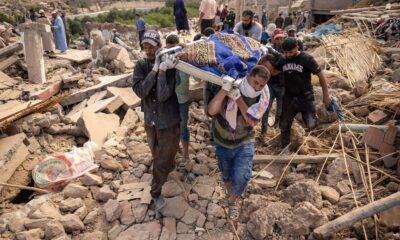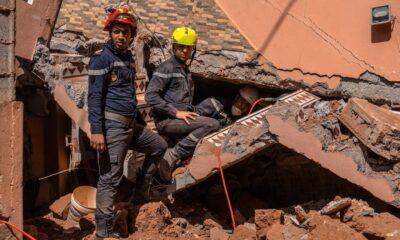World
Over 1000 Dead After Devastating Earthquake Strikes Central Morocco
Over 1000 people have lost their lives in a devastating 6.8-magnitude earthquake that struck central Morocco’s High Atlas mountain range on Friday, September 8. Rescue operations are ongoing amid significant challenges, including damaged infrastructure and hard-to-reach locations. The catastrophe has also impacted Marrakech’s historic sites and poses a serious humanitarian crisis.
The 6.8-magnitude tremor rocked Morocco’s High Atlas mountain range and left thousands in dire need.
MARRAKECH, Morocco—A catastrophic earthquake struck central Morocco, claiming more than 1000 lives and leaving hundreds severely injured, according to Moroccan authorities. The quake took place on Friday, September 8, at 11:11 p.m. local time, in the High Atlas mountain range.
Magnitude and Depth
The United States Geological Survey (USGS) confirmed that the earthquake had a magnitude of 6.8 and originated at a relatively shallow depth of 18.5 kilometers (11.4 miles). Its epicenter was approximately 72 kilometers (44.7 miles) southwest of the bustling city of Marrakech, which is home to nearly 840,000 residents and a major tourist hub.
Historic Tragedy
This marks the deadliest earthquake in Morocco since 2004, when a 6.3-magnitude quake struck Al Hoceima, resulting in around 630 fatalities. The worst earthquake in Morocco’s modern history occurred in 1960 in Agadir, claiming over 12,000 lives.
According to Morocco’s Interior Ministry via state-run TV Al Aoula, the current disaster has so far resulted in at least 820 deaths and 672 injuries, with 205 of those described as being in critical condition.
Ground Zero: A Grim Scene
Fatima, a 50-year-old resident of the town of Asni near the epicenter, narrated her horrifying experience to CNN: “I barely had the chance to grab my kids and run out before I saw my house collapsing. The neighbor’s house also collapsed, and there are two dead people under the rubble.”
Rescue Efforts
Rescue operations are underway, but the situation is dire. Mohammed, another resident from the nearby town of Ouirgane, told CNN that he lost four family members in the earthquake. “We are out in the streets with authorities as they try to pull the dead from the rubble. Many people were transported to the hospital in front of me. We are hoping for miracles from the rubble,” he said.
The Royal Moroccan Armed Forces urged residents to stay alert for aftershocks, reminding them “of the need to exercise caution and take safety measures.”
Barriers to Relief
The geography of the affected area poses significant challenges to rescue and relief efforts. Many of the casualties occurred in hard-to-reach mountainous regions close to the epicenter. Al Aoula reported that damaged roads were also hampering the movement of emergency services.
Call for Blood Donations
Moroccan health authorities have called on people to donate blood to help the victims, and many spent Friday night on the streets for fear of aftershocks.
Collateral Damage
The earthquake has also inflicted significant damage on Marrakech’s historic sites, according to CNN researcher Benjamin Brown. The red walls surrounding Marrakech’s old city center, which date back to the early 12th century, have partially crumbled.
Unusual Strength
The USGS noted that earthquakes of this magnitude are rare for this part of Morocco. “Earthquakes of this size in the region are uncommon, but not unexpected. Since 1900, there have been no earthquakes M6 (magnitude 6) and larger within 500 km of this earthquake,” USGS stated.
Economic and Cultural Impact
The earthquake is likely to have a profound impact on the region, both culturally and economically. Marrakech, a former imperial city with a history spanning nearly a millennium, is also one of Morocco’s major economic centers.
In the aftermath of the catastrophic earthquake, the road to recovery appears long and arduous. As the Moroccan government and international aid agencies ramp up their relief efforts, the world watches, hopes, and prays for the people caught in this calamity.
Sources:













